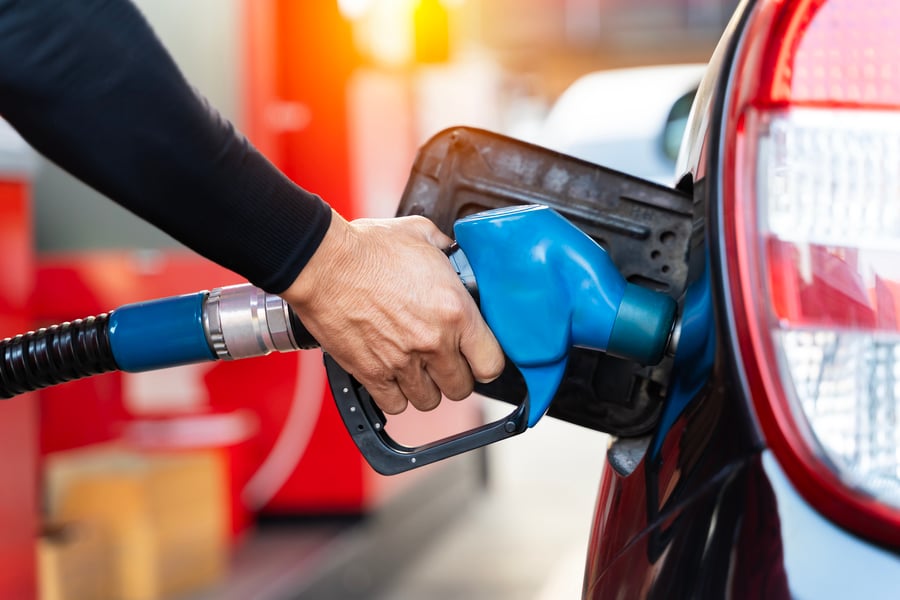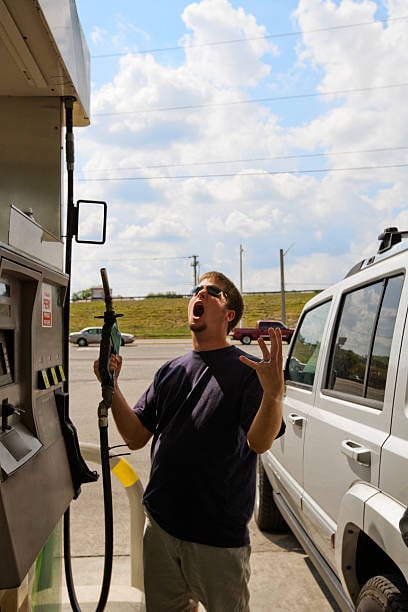Tackle Gas Price Volatility with Better Sign Control

Gas price volatility is driven by everything from extreme weather to geopolitical events to supply and demand issues. It’s not unusual for gas prices to fluctuate daily, especially during the summer driving months.
“Gasoline prices tend to increase when the available gasoline supply decreases relative to real or expected gasoline demand or consumption. Gasoline prices can change rapidly if something disrupts crude oil supplies, refinery operations, or gasoline pipeline deliveries.”
explains the U.S. Energy Information Administration. “Even when crude oil prices are stable, gasoline prices fluctuate because of seasonal changes in demand and in gasoline specifications.”
For fuel retailers, this environment creates daily challenges. How quickly can you respond to price changes? Are your signs keeping pace with your POS system and competitors down the street? Can you update all your locations instantly, or are you still relying on manual updates?
Automated price sign control is essential to respond to price changes in a market where profit margins often hover below 2 percent.
Price Rollercoaster: Seasonal Events and Other Factors
U.S. gas prices have been on a bit of a rollercoaster ride since 2020, and prices fluctuate not only from season to season historically during the year but also in response to other factors.
“Pump prices fluctuate based on the time of year, geopolitical events, refinery operations and a host of other factors,” said Pew Research last summer. “Overall, the price index for all grades of gasoline was 35.9 percent higher in June 2024 than it was in January 2020. But that hides considerable volatility. From January 2020 to June 2022, gas prices nearly doubled (an 89.5% increase), but since then, they’ve fallen 28.3 percent.”
Fuel prices have always been subject to change, but in recent years, volatility has become more extreme and more frequent. A mix of global and domestic pressures is driving this volatility, including:
- Geopolitical unrest in Eastern Europe and the Middle East.
- Hurricane threats in the Gulf of Mexico, affecting refining and shipping.
- Tariff shifts and trade tension on oil imports and refining materials.
- Regional outages or maintenance at key refineries.
The NACS explains that since 2000, gasoline prices have increased an average of 50 cents from the seasonal low at the beginning of February to the seasonal high in mid-May. Factors, according to NACS, include:
- February: Refinery maintenance (aka “turnaround”) is scheduled during the slowest months of the year. A quarter of all refineries undergo a turnaround each spring.
- March to April: Refineries switch to the most expensive to make summer-blend fuel mandated by the EPA.
- May to June: May 1 is the deadline for terminals to purge their systems of winter-blend fuels, which can lead to lower inventories.
- Summer Drive Season: Gas demand increases a few percentage points each month starting in February and peaking in August. Any stress on the systems, such as those listed above, can affect supply and demand and prices.
- September: Demand, and temperatures, cool. Most retailers can switch to winter-blend fuels by Sept. 15, which are cheaper to produce.
Why Fast Fuel Price Control Matters Now More Than Ever
In today’s highly competitive fuel market, pricing is a game of speed, visibility, and precision. Small delays or mismatches can have big consequences.
The Risks of Manual Signage
- Labor-intensive: Employees must manually change signs — often outside, in heat, rain, or on ladders near roadways.
- Inconsistent: Manual updates can be delayed or performed incorrectly, creating mismatches between pump and street price.
- Dangerous: Sign changes in busy traffic areas or during severe weather pose serious safety risks.
- Slow to react: Competitors with remote-controlled signs can adjust pricing instantly, leaving you behind.
What Is Gas Station Sign Automation?
Electronic price signs are LED-based displays that can be updated remotely — either from a central office or directly at the POS — in seconds. PWM’s signage solutions are purpose-built for fuel retailers and integrate seamlessly with back-end systems for real-time updates.
Key Features of PWM’s Price Sign Automation:
- Remote control – including remote price sign updates -- via secure web interface.
- Centralized pricing management across multiple locations.
- Real-time syncing with POS and back-office systems.
- Automated price reporting, including time stamps.
- Durable, sunlight-readable LED displays.
- Custom digit sizes for different sign structures.
Manual Signs vs. PWM Electronic Signs
|
Feature |
Manual Signs |
PWM Electronic Signs |
|
Update Time |
5–20 min/site |
Instant, remote-controlled |
|
Accuracy |
Prone to error |
Precise, all sites synced |
|
Weather & Safety Risk |
High |
None |
|
Labor Cost |
Ongoing |
Minimal after install |
|
Multi-site Pricing |
Inconsistent |
Centralized, synced |
|
Compliance Risk |
Higher |
Low (auto-updates) |
How Reliable Price Sign Control Protects Your Business
Fuel retail operates on razor-thin margins, making responsiveness and operational efficiency critical.
With PWM’s automated price signage, you can:
- React to market changes instantly: Keep pricing in lockstep with wholesale shifts or competitor behavior.
- Coordinate promotions across multiple sites: Launch or end a discount in real time — no need for phone calls or manual updates.
- Preserve customer trust: Consistent pricing between pump and sign improves credibility.
- Avoid legal and regulatory issues: Many states enforce strict rules on price accuracy; automation helps you comply.
The Cost of Delay: A Margin Math Perspective
Let's say you operate 10 typical gas station locations, each selling approximately 3,000 gallons per day (30,000 gallons total daily volume). A delay in adjusting your price — even by just 2¢/gallon — can result in a $600 daily loss per location, or $6,000 across all locations. Over a month, that's $180,000 in margin erosion.
In contrast, a one-time investment in automated price signage pays off by:
- Reducing labor hours
- Avoiding costly errors
- Increasing responsiveness
- Supporting long-term pricing strategies
A Smarter Investment for a More Volatile Future
While digital signage has clear operational benefits, it’s also about preparing your business for a more dynamic and digital future. With the increasing digitization of the forecourt — from payment systems to loyalty apps — electronic signage completes the picture.
It’s also scalable: PWM’s systems grow with you. Whether you manage one location or 100, the platform allows centralized control with local flexibility.
Why Choose PWM?
PWM Electronic Price Signs has been a trusted leader in digital fuel signage for over 20 years. Our solutions are engineered for harsh conditions, easy to install, and backed by responsive customer support.
PWM Advantages:
- Seamless integration with major fuel pricing and POS platforms.
- Wide range of digit sizes and display formats.
- Energy-efficient LED displays with ultra-bright readability.
- Secure, encrypted cloud-based controls.
- Proven track record with leading fuel brands.
Don’t Let Gas Price Volatility Catch You Off Guard
Gas price fluctuations aren’t going away. If anything, they’re accelerating. Fuel retailers need infrastructure that adapts in real time — without adding workload or risk.
With PWM’s gas station sign automation, you gain the speed, reliability, and control needed to stay competitive and protect your bottom line.
Let PWM help you modernize your forecourt and stay ahead of volatile fuel pricing.
Contact us today for a free demo or to learn more about integrating fast, reliable electronic price signs into your station network.






